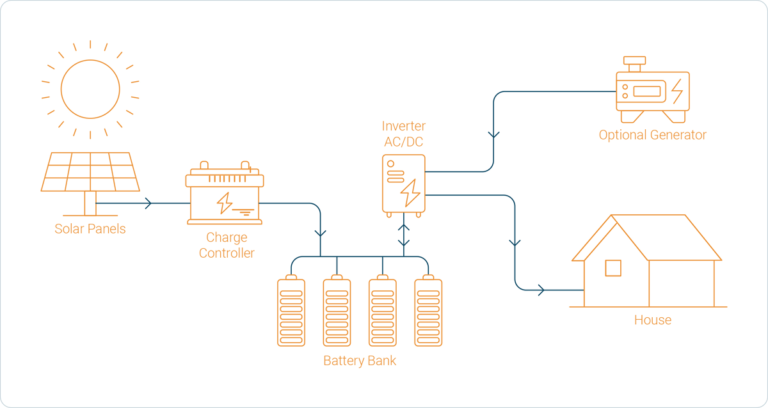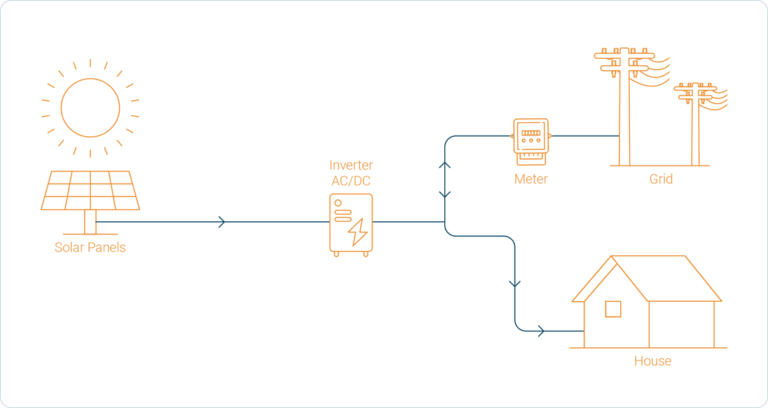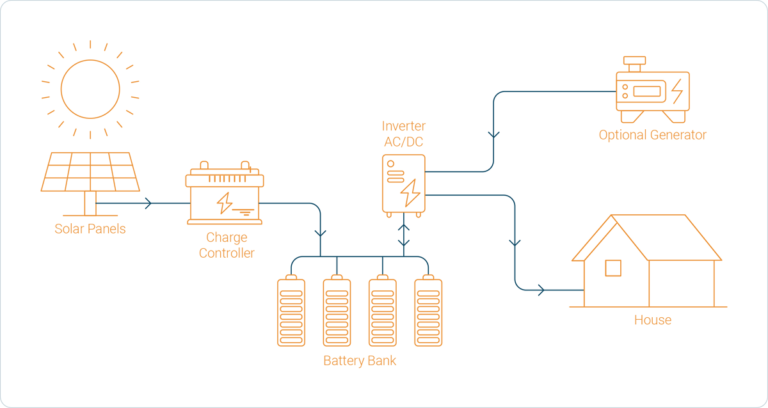Are the batteries necessary for a solar energy system?
- By user

The inclusion of batteries depends on the type of solar PV system that you are planning to get installed. If the system is grid-tied, you can but do not have to include the batteries. For off-grid systems batteries need to be included.
Off-grid systems work without connection to the grid. This means you have to store energy using a battery. This makes this system considerably more expensive to install as opposed to the grid-tied system. This option is viable in very remote areas where running grid cables to that area would be costlier.

Grid-interactive systems
The consumer takes advantage of the public electricity grid to draw power from the grid when solar energy is not available or not available in sufficient quantities to meet the electricity demand or to export surplus solar energy to the grid. A grid interactive system will allow you to reduce equipment and installation cost, get better efficiency rates, and get credits for your surplus solar energy exported to the grid.

Can batteries work with the grid-interactive solar PV system?
You can install optional batteries in your grid-tie system to cushion against grid outages, especially in areas with adverse weather conditions. This is simply a backup plan. During outages, the batteries can supply electricity, but you cannot pump power to the grid at that time. Any grid-tie solar system must have an auto shutdown function when grid power goes out to protect line maintenance workers. Still, if you have battery storage for your grid-interactive system, you can also sell the power back to the grid during peak times when the rates are higher. A grid interactive solar PV system with battery storage is often called a hybrid system. It offers the best of the off-grid and the grid interactive system by utilising the grid services and providing electricity supply in the case of power outages.

What’s the best type of battery for solar PV?
There are essentially three types of batteries; flooded lead-acid accumulators (FLA), sealed lead-acid accumulators (SLA), and lithium-ion batteries. FLA are the cheapest and the oldest but require regular maintenance for best operation. You just need to top up the battery with distilled water to account for the evaporation. SLAs are advanced FLAs, where the battery is sealed to prevent evaporation. They are a little more expensive than the FLAs but do not need maintenance. Lithium-ion batteries represent the currently best battery technology commercially available. These are known to charge much faster than the other two battery types. They also withstand deep discharge cycles and last the longest, in addition to being maintenance-free.
